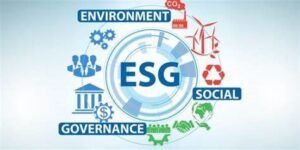Last week, the New York State Senate in its Environmental Conservation Committee proposed Bill SB 3456 which is a companion bill to Assembly Bill A4282. See attached draft copy at https://www.nysenate.gov/legislation/bills/2025/S3456
These bills, if enacted, would become the second set of bills passed in the United States which are aimed at requiring entities with connections to New York to report on their greenhouse gas emissions under Scope 1, Scope 2 and Scope 3 beginning in 2027. New York would join California as the second state in the US in requiring this type of reporting for companies with over $1 Billion in revenue.
Between New York at $1.6 Trillion of real GDP and California at $2.9 Trillion of real GDP, these two states together would represent more than 17.5% of the US’s real GDP being subject to Scope 1, 2 and 3 reporting requirements for greenhouse gas emissions.
California passed their version of a very similar reporting bill, SB 253, in 2023, with an effective date of January 2026. New York’s bill, if enacted, required regulations to be passed by December 31, 2026 with an effective reporting requirement for entities subject to the bill during 2027 for Scope 1 and 2 and 2028 for Scope 3.
As readers will likely recall, the SEC has pursued a similar path during 2023 and 2024, issuing proposed rules, and then final rules and then revised final rules which were then challenged and consolidated into one case in the 8th Circuit. The SEC’s final rules only required reporting on Scope 1 and 2 after receiving a backlash of comments about Scope 3. Currently, as of February 11, 2025, the SEC’s acting Chairman Mark Uyeda said that the commission will pause litigation of its climate disclosure rule in the 8th Circuit case, effectively ending, for now at least, the SEC’s pursuit of federal rules focusing on climate disclosure of Scope 1 and 2 greenhouse gases for reporting companies.
Despite the SEC’s position, it appears that states will continue to pursue their own path regarding climate disclosure. While California’s law had been challenged by various parties, earlier this month on February 3, 2025, the District Court for the Central District of California issued an order (https://www.troutman.com/a/web/gEwAfXN75c6MMmenKh3yd3/us_dis_cacd_2_24cv801_d96315207e190_order_granting_defendants_motion_to_dismiss_plaint.pdf) dismissing constitutional challenges posed to SB 253 and SB 261 and clears a path for the California Air Resources Board to develop necessary implementing regulations.
The New York bill is very similar to the California bill and requires reporting starting in 2027 and additional reporting in 2028. It also requires a third party report of limited assurance on Scope 1 and 2 in 2027 and a reasonable assurance report starting in 2031.
If New York follows the path of California here, companies with limited contacts to New York will find themselves subject to this reporting regime and need to put in the work to measure, monitor and report on their Scope 1, 2 and 3 greenhouse gas emissions if they have sales of over $1 Billion Dollars (and those sales need NOT be in New York alone, rather they are in the aggregate and likely will include subsidiary and related entities).
Green Spouts: While it is highly likely that various parties like the US Chamber of Commerce (who sued California for implementing SB 261 and 253) will also attempt to block New York from implementing its version of SB 3456, given the District Court’s ruling noted above, it appears that if passed in New York, that the constitutional challenges raised by the plaintiffs are not likely to withstand New York court scrutiny and New York could join California as requiring such reporting as early as 2027. Again, the Bill needs to clear the Senate Environmental Committee and then needs to be voted on and approved by the Senate and also needs Assembly approval and the Governor’s signature, but it appears that these steps are not only possible but likely in 2025, partially/fully in reaction to the Federal government’s overall environmental position and its position taken in withdrawing from the SEC Final rules on climate disclosure. This author’s view is that the Bill will likely pass in New York and be signed by the Governor, will attract challenges like California’s version did and that those challenges under New York law will survive such a challenge and that the law will become a reality during 2025/2026.
Duane Morris has an active Sustainability and Risk Mitigation Team to help organizations and individuals plan, respond to, and execute on your Sustainability and Risk Mitigation planning and initiatives. For more information, please contact Brad A. Molotsky, David Amerikaner, Sheila Rafferty-Wiggins, Jeff Hamera, Jolie-Anne Ansley, Robert Montejo, or the attorney in the firm with whom you are regularly in contact.

